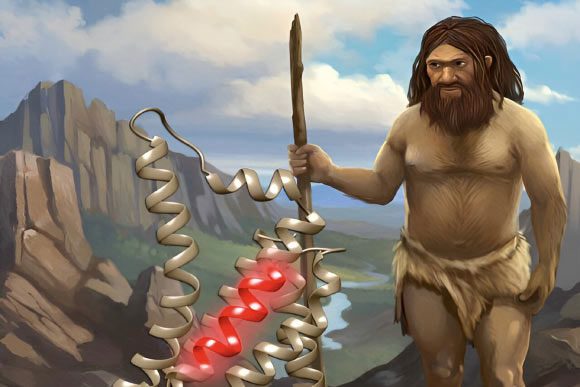Humans face nearly 5 million deaths each year related to antibiotic resistance. A team led by American biotechnology researcher Cesar de la Fuente is utilizing artificial intelligence-based computational methods to search for new antibiotics by mining the genetic information of extinct organisms.
American scientists have successfully revived something critically important in the fight against “killer” pathogens that humanity lost with the extinction of two hominin species: Neanderthals and Denisovans.
The team of scientists, led by Dr. Cesar de la Fuente from the University of Pennsylvania, has studied the protein expressions of the two extinct human species and discovered dozens of small protein sequences with antibiotic properties.
Subsequently, their laboratory succeeded in resurrecting long-lost chemical compounds, paving the way for the development of new medications to combat the increasingly catastrophic “pandemic” of antibiotic resistance.

The newly “revived” molecules from ancient humans could make a significant contribution in the fight against antibiotic-resistant “killers” – (Graphic: Ella Marushchenko)
According to Sci-News, the genomes of ancient humans expressed proteins with natural antibacterial properties, but these molecules have been extinct for a long time.
Scientists recognized that the two ancient human species, Neanderthals and Denisovans, which disappeared around 30,000 years ago, still possessed these factors.
They are also very closely related to modern Homo sapiens, belonging to the genus Homo.
In this groundbreaking experiment, scientists used computers to “redesign” the relevant amino acid sequences based on data about these two human species that researchers around the world have collected over nearly two decades.
The amino acids were converted into a real molecule, which was then reconstructed using actual materials in the laboratory.
The molecules not only achieved a literal resurrection, but also showed remarkable results in experiments against pathogens on petri dishes and in living mice.
This success was recently published in the scientific journal Cell Host & Microbe. However, scientists are still working to maximize the effects of the molecule by refining it using AI tools; as well as discussing with lawyers and bioethicists to ensure the safe and purposeful application of their work.
“There hasn’t been a truly new antibiotic in decades, so we need to think about more than just a new drug. We need new frameworks,” Dr. Fuente stated regarding the primary goal of their research.
Recent estimates indicate that over 1 million people worldwide die from drug-resistant infections every year.
The threat continues to escalate exponentially. According to a chilling forecast from the World Health Organization (WHO), by 2050, deaths related to antibiotic resistance could reach 10 million annually.
- The Most Mysterious High-Speed Train in China: Carrying Nothing but Undertaking a Vital Mission, Only Departing at Night
- Research from Australia: Sleeping This Way is No Different from Self-Harm, Increasing the Risk of Dementia by 53%
- Old Photos from the Qing Dynasty: A Close Look at the “Super Cars” of the Wealthy Aristocracy, a Symbol of Status and Family Influence at the Time




















































